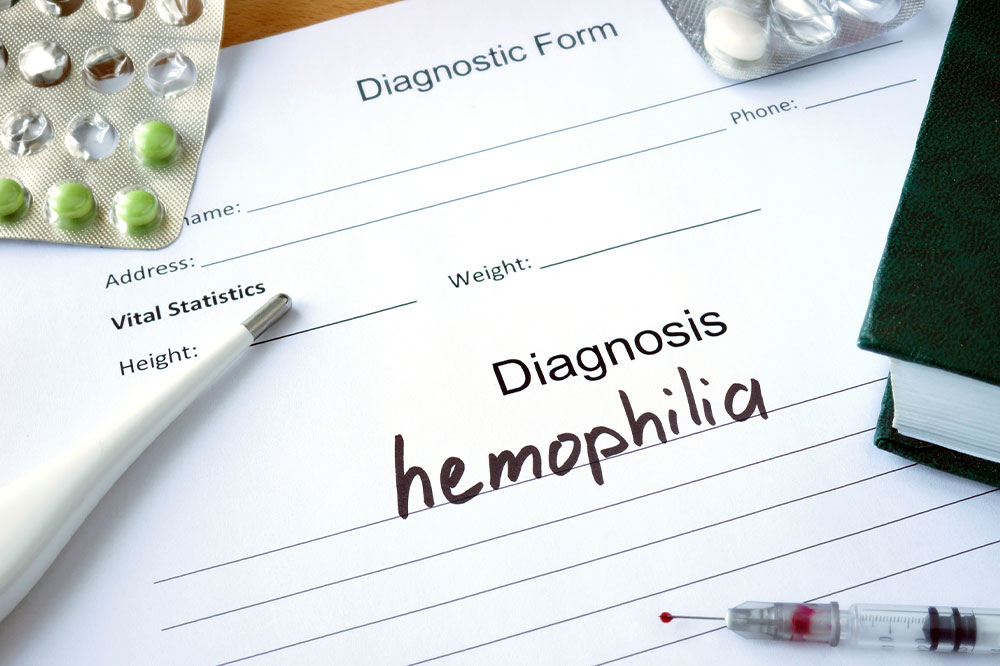8 signs and symptoms of hemophilia

Hemophilia is a genetic disorder where the patient’s blood does not clot properly. Our blood has natural proteins or clotting factors that facilitate clotting. But people with this condition have lower levels of these factors. There are two types of this disorder. Type A is caused due to the lack of clotting factor VIII, and type B is caused due to lower levels of factor IX. Here are the must-know signs of hemophilia:
Nosebleeds and bleeding from the gums
Most people with a mild form of this condition are prone to bruising of mucous membranes in the nose or gums. As a result, they report regular instances of nosebleeds and gum bleeding without any apparent reason. While the bleeding does not last long for some, others have severe episodes and require the attention of a health expert.
Profuse bleeding after a surgery or an injury
Many people with hemophilia A do not know they have the condition. The problem often comes to light accidentally when one bleeds excessively during surgery for another ailment. Similarly, when such individuals are injured, they notice unusual bleeding and realize they have a genetic bleeding disorder only after undergoing tests. Both surgery and injuries can cause out-of-proportion bleeding. The doctor may diagnose the condition after seeing the patient bleeding too easily.
Bleeding during surgery and injury usually occurs in mild and moderate cases. In severe cases of hemophilia, spontaneous bleeding occurs even without injury or surgery. It could be because of a tiny bruise or during a minor procedure like tooth extraction. Severe bleeding could also arise after something as common as a vaccination or flu shot.
Joint swelling and pain
Patients often suffer from inflamed and painful joints, especially if the disease is severe. It happens because of internal bleeding. The blood drains into the joints or deep muscles, causing swelling and restricting joint movement. The most affected joints are the ankles, elbows, and knees. When left untreated, this condition can, over a period, develop into arthritis of that particular joint.
Goose eggs and intracranial bleeding in infants
Hemophilia A can be detected early in life, sometimes as soon as the child is born. One of the signs an infant manifests is the appearance of large bumps or swelling on the forehead, called goose eggs. Many little ones also frequently bleed from minor mouth injuries. Further, doctors may report intracranial bleeding or bleeding in the skull in some children just after birth. Even though this symptom is rare, the possibility exists in severe cases.
Hematomas in kids
When children with this condition are untreated, they tend to develop hematomas. These are masses or solid swellings caused by blood pooling under their skin. It happens when the soft tissues and muscles under the skin get bruised and bleed, causing the blood to build up in the particular area. If there is simultaneous bleeding into the joints, it is most certainly a sign of hemophilia. Children diagnosed with hematomas can have between two and five spontaneous bleeding episodes each month. They can also have profuse bleeding if injured or during minor surgery.
Hematuria
Kids or adults with a severe form of the disease may experience blood in their urine, called hematuria. It happens when there is bleeding in the genitourinary system. Even a tiny amount of blood can cause the urine color to change. It could turn pink, brown, or red. In some cases, individuals may not be able to notice any change in the color of their urine with the naked eye and may need to undergo urine tests.
Melena
Blood in the stool or black-colored stools is another symptom. It is called melena or hematochezia. This happens when the gastrointestinal or the digestive tract bleeds in severe cases. A foul odor generally accompanies blood in the stool.
Headaches
While headaches could result from many factors, they are also signs of intracranial bleeding. Such individuals, kids or adults, may complain of stiffness in the neck. The headaches could also be accompanied by seizures, excessive drowsiness, double vision, vomiting, and nausea. Intracranial bleeding can prove fatal if the diagnosis is delayed and treatment does not start on time.
As per the CDC, about 400 infants in the country are born with hemophilia A every year. And one male birth out of every 5,000 births is affected. But unfortunately, it is not easy to detect the condition immediately after the child is born. The bleeding disorder is mostly detectable in infants between four weeks and a child up to 11 years. The right time to consult with a doctor is when a few of the mentioned signs are visible. For instance, if the child is injured and the blood does not clot as it should, it is time to seek professional help. Similarly, if the child develops swollen joints or joint movements that are restrictive compared to other children of their age, it is an indication that a specialist needs to examine them.
Unfortunately, for many people, these prolonged bleeding incidents do not occur till adulthood. It is mostly the case with people suffering from mild or moderate hemophilia.







